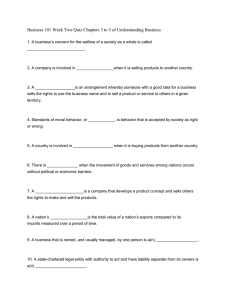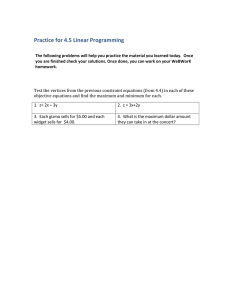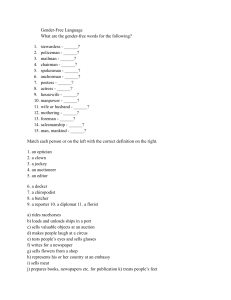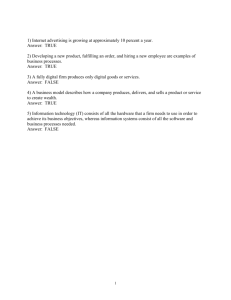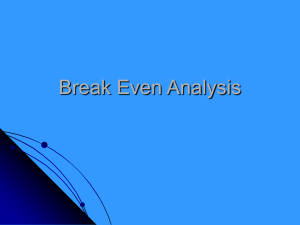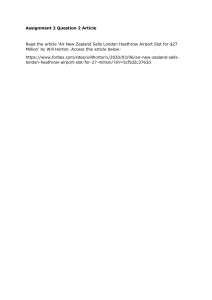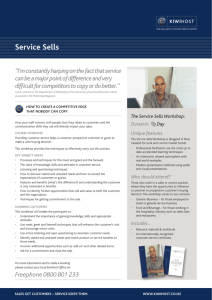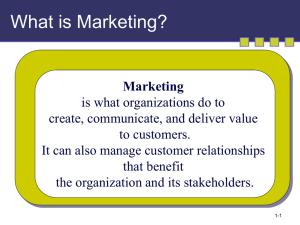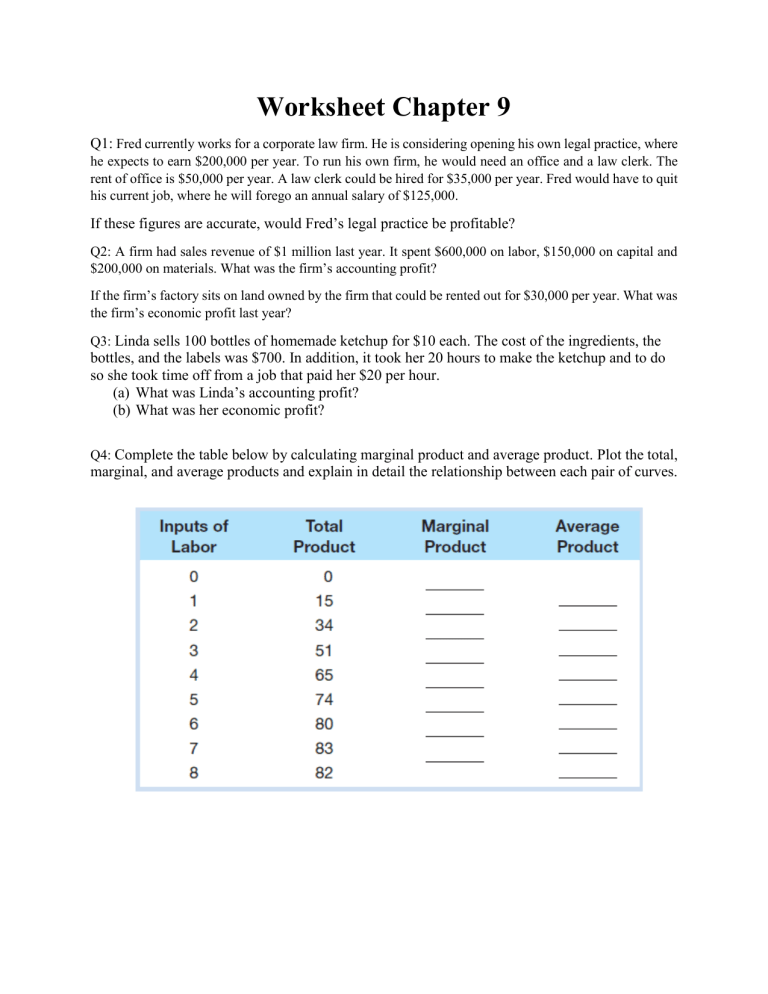
Worksheet Chapter 9 Q1: Fred currently works for a corporate law firm. He is considering opening his own legal practice, where he expects to earn $200,000 per year. To run his own firm, he would need an office and a law clerk. The rent of office is $50,000 per year. A law clerk could be hired for $35,000 per year. Fred would have to quit his current job, where he will forego an annual salary of $125,000. If these figures are accurate, would Fred’s legal practice be profitable? Q2: A firm had sales revenue of $1 million last year. It spent $600,000 on labor, $150,000 on capital and $200,000 on materials. What was the firm’s accounting profit? If the firm’s factory sits on land owned by the firm that could be rented out for $30,000 per year. What was the firm’s economic profit last year? Q3: Linda sells 100 bottles of homemade ketchup for $10 each. The cost of the ingredients, the bottles, and the labels was $700. In addition, it took her 20 hours to make the ketchup and to do so she took time off from a job that paid her $20 per hour. (a) What was Linda’s accounting profit? (b) What was her economic profit? Q4: Complete the table below by calculating marginal product and average product. Plot the total, marginal, and average products and explain in detail the relationship between each pair of curves. Q5: A firm has fixed costs of $60 and variable costs as indicated in the table at the bottom of this page. Complete the table. a. Graph total fixed cost, total variable cost, and total cost. Explain how the law of diminishing returns influences the shapes of the variable-cost and total-cost curves. b. Graph AFC, AVC, ATC, and MC. Explain the derivation and shape of each of these four curves and their relationships to one another. Q6: Assume that fixed costs is Rs. 850, variable cost per item is Rs. 45, and selling price per unit is Rs. 65. Write, i. Cost function ii. Revenue function iii. Profit function Q7: If a retail store has fixed cost of Rs.150 and variable cost per unit is Rs.175 and sells its product at Rs. 500 per unit. Find i. The cost function C(x) ii. The revenue function R(x) iii. The profit function P(x) Q8: A company produces and sells a product and fixed costs of the company are Rs. 6,000 and variable cost is Rs. 25 per unit, and sells the product at Rs. 50 per unit. i Find the total cost function. ii Find the total revenue function. iii Find the profit function, and determine the profit when 1000 units are sold. iv How many units have to be produced and sold to yield a profit of Rs. 10,000? Q9: Earl’s Biking Company manufactures and sells bikes. Each bike costs $40 to make, and the company’s fixed costs are $5000. In addition, Earl knows that the price of each bike comes from the price function 𝒑(𝒙) = 𝟑𝟎𝟎 − 𝟐𝒙 Find: 1. The company’s revenue function, R(x). 2. The company’s cost function, C(x). 3. The company’s profit function, P(x). 4. The output level that maximizes the company’s profit, and the maximum profit. Q10: A firm of handheld games manufacturing games with fixed costs of $15000 and cost per game of $2, and price function 𝒑(𝒙) = 𝟓𝟎𝟎 − 𝟑𝒙 Find: 1. The firm’s revenue function, R(x). 2. The firm’s cost function, C(x). 3. The firm’s profit function, P(x). 4. The output level that maximizes the firm’s profit, and the maximum profit.
